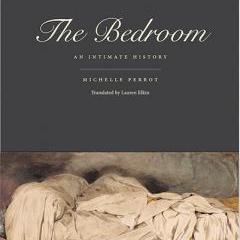The Bedroom: An Intimate History
DeTnk Bookshelf
An erudite and highly enjoyable exploration of the most intriguing of personal spaces, from Greek and Roman antiquity through today
The winner of France’s prestigious Prix Femina Essai (2009), this imaginative and captivating book explores the many dimensions of the room in which we spend so much of our lives—the bedroom. Eminent cultural historian Michelle Perrot traces the evolution of the bedroom from the time of the ancient Greeks and Romans to today, examining its myriad forms and functions, from royal king’s chamber to child’s sleeping quarters to lovers’ trysting place to monk’s cell. The history of women, so eager for a room of their own, and that of prisons, where the principal cause of suffering is the lack of privacy, is interwoven with a reflection on secrecy, walls, the night and its mysteries.
Drawing from a wide range of sources, including architectural and design treatises, private journals, novels, memoirs, and correspondences, Perrot’s engaging book follows the many roads that lead to the bedroom—birth, sex, illness, death—in its endeavor to expose the most intimate, nocturnal side of human history.
Michelle Perrot is professor emeritus at Paris VII and one of France’s most distinguished cultural historians. She has received numerous awards and honors in France and abroad for her published histories of work, prisons, private life, and women. Lauren Elkin is an award-winning writer and translator. She lives in Paris.
And so to bed
Lisa Hilton on an attempt to lure us inside a room of our own
LISA HILTON
In a perceptive review of Laurent Binet’s novel The Seventh Function of Language (2017), Lauren Elkin, the translator of Michelle Perrot’s The Bedroom (first published in France in 2009), observes that semiotics is a lot like detective work. The decoding of objects’ symbolic value has been a particular preoccupation of French intellectual life since the 1970s, which is perhaps what gives The Bedroom both its musty, dated air and a sense, in the initial chapters at least, that the text might have been imagined by Binet himself as part of his satire on the rock stars of deconstruction. Grandiloquent statements – “the bedroom crystallizes the relationship between space and time” (as opposed, say, to the second law of thermodynamics) – are tossed gaily through the text like abandoned underclothes in the boudoir, while solemn banalities – “many women died in childbirth” – are earnestly footnoted. The overall effect is of an entrant to the grandes écoles rehearsing for her viva. The usual suspects – prominent among them Barthes and Foucault – are carefully cited, but the extent of Perrot’s research often appears to reach no further than the contents of her own bedroom bookshelves.
“Before the bedroom there was the room, before that almost nothing”, Perrot announces. She chooses to leapfrog over much medieval history and begin with a description of the king’s bedroom at Versailles under Louis XIV – an account for which she relies heavily on the memoirs of the duc de Saint-Simon, who spoke to the Sun King twice. Emmanuel Le Roy Ladurie is more thorough as an interpreter of the stultifying etiquette of the Versailles system, and Nancy Mitford much funnier; there is no fresh research or information in Perrot’s summary, which is at best indecisive as to the significance of the royal bedroom: “the king’s chamber guards its mysteries”. That said, we learn that Perrot intends to trace the origin of the desire for a “room of one’s own”, which mark of individualization is apparently less universal than it might appear. The Japanese had no notion of privacy, we are told, which might have come as news to the ukiyo-e artists of the seventeenth century; nonetheless, Perrot is broadly correct in her account of the evolution of private sleeping space as depending on the movement from curtained or boxed beds to separate chambers during the same period in Europe. This is about as far as the tracing of origins goes – Perrot then makes a brief detour into the communal apartments of Eastern Europe before the collapse of communism (though anyone interested in the psychological consequences of this would do better to read Orlando Figes), before announcing confidently that the conjugal bedroom became customary for the middle classes in the West after 1840, in imitation of Queen Victoria and Prince Albert, who married that year. On page fifty-five we are reminded once more that “the bed retains its mysteries”, not the least of which is why didn’t the editors step in and attempt to organize Perrot’s material?





















